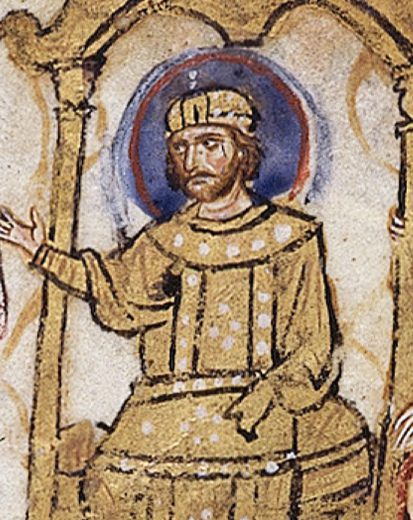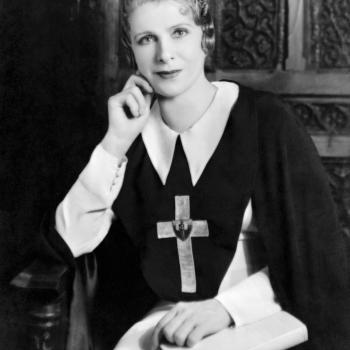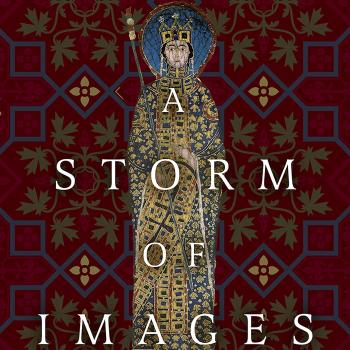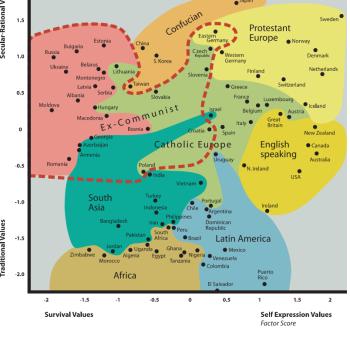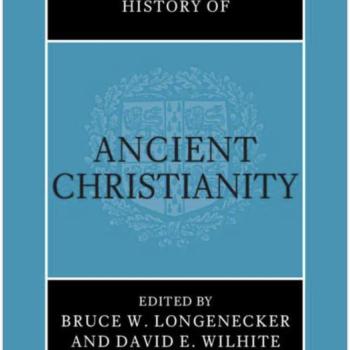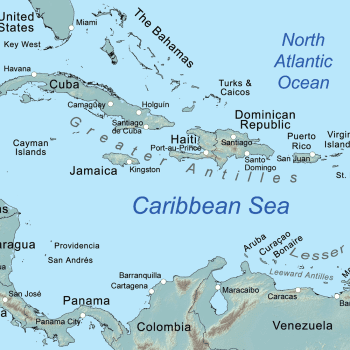Historians sometimes have the bad habit of assuming that laws and edicts passed in bygone eras actually meant something. They note a law that prohibits Behavior X, and assume that this somehow suppressed that behavior, without noting that the same government continued to pass similar laws regularly and frequently over the following decades or centuries, suggesting that the original prohibition had little if any effect. In reality, ancient and medieval states were far weaker than we ever assume, and deviant beliefs and behaviors were stubbornly resilient.
In a Western and Christian context, that observation applies particularly to the history of alternative and non-orthodox forms of belief and practice, of the kind that were termed heretical. We note how stringently empires and kingdoms tried to suppress such beliefs and their attendant scriptures, from the fourth century onward, and commonly assume that these must have had some effect. In reality, alternative and deviant scriptures continued to be read and used, within the Christian Roman Empire and its successors, but also far beyond those borders, where the imperial writ did not run. In my 2015 book The Many Faces of Christ, I traced the lengthy survival of such suspect and alternate scriptures through the Middle Ages and beyond.
This gap between official condemnation and actual survival has been glaringly obvious to me in writing my most recent book A Storm of Images, which concerns the Iconoclasm struggle in the Byzantine/Roman world in the eighth and ninth centuries. I stress the date, almost a half millennium after the conversion of Rome to Christianity, and a long era in which multiple regimes issued regular edicts against heresies of all kinds, commonly backed with the death penalty. Well, that should have had some effect, right?
One very surprising feature of the Byzantine world was its sprawling religious diversity. Such a statement might sound incredible given the accounts we regularly read of the savage persecution of heretical groups, and those horrors undeniably did occur. But these accounts also make us realize not just that those groups existed but that they remained in place for lengthy periods, and for much of that time they were little molested by the authorities in church or state.
The empire contained within itself multiple sects and schools of thought, some of which were very much at odds with the orthodoxy of the patriarchal palace. Besides Jews, there were also groups holding rival Christologies, in addition to survivors of some of the famous heresies of antiquity, and those in some numbers. The Montanist sect of Phrygia dated back to the second century, when it was utterly condemned by the mainstream Great Church, but the emperor Leo III still found Montanists to persecute in the 720s, when he demanded their baptism into orthodoxy. And this time we mean it!
As we know well, a great many dissident sects and belief systems had circulated within the Early Christian world, many of which were harshly critical of the mainstream Great Church and its clerical hierarchy. Those heresies were very diverse in their opinions and ranged far beyond the familiar “Gnostic” ideas that have been so much explored in modern times. There were powerful Jewish-Christian sects that refused to break from the authority of the Jewish law and its customs. Some groups were Dualist, viewing the whole of material creation as evil. Some sects denied the belief that Jesus Christ was a material human figure: rather, he was always a divine being who only seemed to assume human form. From the word for “seem,” dokeo, such groups were known as Docetic. Popular accounts of those venerable heresies imply that they must have perished in the fourth or fifth centuries, owing to forcible repression by a newly Christianized empire, which thoroughly destroyed their scriptures. But the struggles to defend orthodoxy against these alternative ideas persisted far longer than conventional accounts suggest.
One truly radical sect with ancient roots was the Athinganoi, the Untouchables, who began in Phrygia and Lycaonia, and persisted at least into the ninth century. Although their history is obscure, they were anti-Trinitarians who believed in the absolute unity of God, and the group may have grown out of early Jewish-Christian sects, or even from a crypto-Jewish movement. They maintained a close association with Jewish communities. They followed the Mosaic law and kept the Jewish Sabbath but did not practice circumcision. Among other doctrines, they reportedly viewed Jesus as the human son of Joseph and Mary, whom God adopted as his Son at his baptism. Following from that Jewish orientation, they rejected material images of faith.
Pro-image authors regularly denounced their enemies as followers of Mani. Whether actual Manicheans existed clandestinely in the Byzantine world in my era is open to debate, but those ideas influenced another group that emerged around 650, which reputedly combined the older heresies of Adoptionism, Marcionism, Docetism, and some strands of the larger Gnostic worldview. (I will explain that qualification about “reputedly” shortly). The new movement became known as Paulicianism. It had Dualist elements, (probably) teaching that Christ represented the God of the New Testament, while rejecting the Old Testament. They rejected the veneration of Mary, associated as it was with ideas of material incarnation, as well as many aspects of orthodox devotion. They loathed the established institutional church, its monks and clergy. As always, it is hard to gauge the support for such movements, but we know that the Paulicians actually ruled major territories in the vital land of Armenia, and they extended deep into the Roman Empire. In the mid-ninth century, the Byzantine Empire slaughtered many thousands of them.
I should say that the actual content of what the Paulicians believed is subject to debate, and some see them as less egregiously heretical. See now Carl Dixon, The Paulicians: Heresy, Persecution and Warfare on the Byzantine Frontier, c.750–880 (Brill, 2022), which sees accounts of the sect’s Dualism as “outmoded.” This appeared too late for me to engage or debate it properly in my own recent book, as I certainly would have done. Dixon’s book is extremely well researched and eminently worth reading, but his argument is anomalous and, I would say, contradictory. He writes that the Paulician idea “was not rooted in the formative disputes of the 3rd and 4th centuries, but a contemporary Christianity that thrived through being of its own time and place. It was also not a static faith: The Paulicians retained a memory of an era when only the Gospels, Acts, and the Pauline letters were admissible” (322).
So while asserting that the movement did not trace back to the ancient heresies, to the disputes of the third and fourth centuries, he goes on to say that they “retained a memory” of the much earlier debates of the mid-second century. Specifically, he says, they held scriptural views that were distinctive to Marcion, and to Marcionism. It is just unacceptable to portray the Paulicians as “broadly conventional Christians inspired by the apostle Paul.”
I ask a specific question. The history of Christian heresies and alternative belief systems is immense, and very well studied. Is there any example of a movement or individual arising based on this particular set of attitudes to Paul and that particular selection of scriptures, except where we can undeniably associate it with a Marcionite origin? I can’t think of one.
On a point of methodology, the fact that a given writer cites texts that Marcionites disliked – most obviously, the Old Testament – does not mean that they did not follow the larger theological system. As a parallel, we might recall the example of Martin Luther, who was painfully aware of the flaws of the Vulgate text, and created his own more accurate translations. Yet throughout his career, he often quoted the Vulgate alongside the newer versions, because that was what he had grown up with. Habit is a hard thing to lose, especially in the matter of sacred texts.
The Paulicians sound to me very much like a surviving sect rooted in the oldest debates over the definitions of orthodoxy, which is what I am arguing here. It also raises the question of how on earth such authentically ancient views had survived over time, unless we imagine whole alternative institutional structures.
Emperors who rose through military service commonly came from border regions and backgrounds where such deviant beliefs were familiar. At the start of the ninth century, the emperor Nikephoros was described as a dear friend of both the Paulicians and the Athinganoi, who received land at his hands. In 820 the soldier Michael II took the imperial throne and began a dynasty. Michael was born in Amorion, in Phrygia, whence the name of the Amorian dynasty that he founded. The main orthodox (and pro-image) historian of the era reports that Michael’s parents followed the Athinganoi. We are told that Michael publicly doubted the final Resurrection and the doctrine of final rewards and penalties at the Last Judgment. He even counted Judas among the saved. He rejected the existence of the Devil, on the grounds that no such figure appeared in the Old Testament.
Perhaps Michael was, as the standard orthodox history recounts, an ignorant man who despised learning and theology but just felt free to express his own common-sense peasant skepticism on these weighty issues. But on so many points, the ideas attributed to him resonate with those of early Christian sects and heresies. Besides the Athinganoi, Phrygia had been the original home of the ancient Montanists.
At various times, Byzantine emperors struggled to deal with the heresies by means other than simply passing futile laws. From the eighth century, they had the wonderful idea of deporting large numbers of those tough Paulicians to the Balkans, where they could guard the frontiers against invading Slavic barbarians. In fact, this turned out to be a superb but unintentional strategy for heretical church planting. Paulician ideas spread rapidly through the Balkans, where they generated a very influential new sect call the Bogomils. Like the Paulicians before them, Bogomil views harked back to the long-stigmatized heresies of the early Christian era, including Gnostic and Dualist survivals. That movement in turn shaped the famous Albigensians of Western Europe, who persisted into the fourteenth century.
Obviously, ancient heresies survived happily in the orthodox Byzantine empire, but do recall that in the eighth century, that empire ruled only a tiny fragment of the former Roman world. Most of that vast territory was under the power of Muslim regimes, who cared not at all about the persistence of ancient Christian heresies – not in Egypt, or Syria, or their former homelands. Those ideas flourished happy under that rule.
Many accounts of ancient heresies focus on the era between around 250 and 450AD, and then largely stop. This gives the false impression that those ideas simply vanished at the end of that era, presumably because of imperial repression. Actually, what is happening is that most historians are not bothering to look after that period. The heresies marched on, scarcely molested. That is a critical lesson for how we write Christian history.


